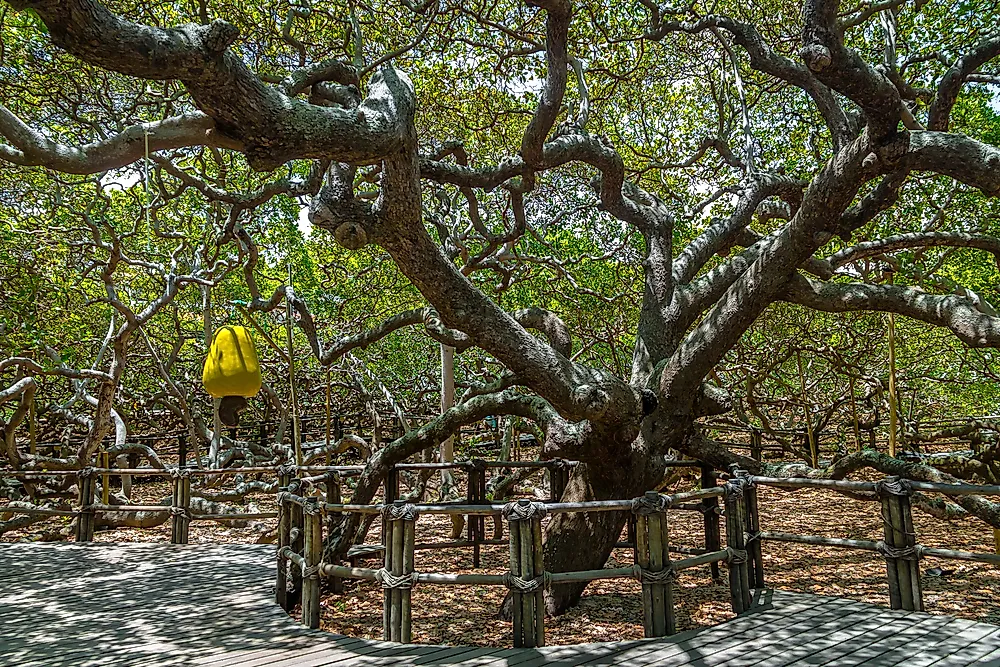Cashew Tree of Pirangi - Natural Wonders of South America

The Cashew Tree of Pirangi is a large cashew tree found in the town of Pirangi do Norte, Brazil. Locally known as the “Maior cajueiro do Mundo,” the cashew tree’s most notable characteristic is its size. The true origin of the cashew tree is not known, with local folklore stating that the gigantic cashew tree was planted in 1888 by Luiz Inacio de Oliveira, a local fisherman who would later die while resting under the tree.
Size and Appearance
The cashew tree occupies an area ranging between 1.8 and 2.1 acres, making it the largest cashew tree, not only in Brazil but in the whole world. The massive size of the cashew tree saw it being inducted into the Guinness Book of Records. The Cashew Tree of Pirangi has a circumference of 1,600 feet, which is equivalent to 70 adult cashew tree of standard size.
While under the tree’s canopy, one could have the impression that there are numerous individual cashew trees due to the extraordinary shape of the tree’s branches. The branches exhibit an anomaly while growing where they grow outwards instead of growing vertically. As the branches grow, their massive weights force them to bend downwards and ultimately touching the ground. Upon making contact with the ground, the individual branches develop roots and continue growing.
The Park
Due to the tree’s reputation, the land on which it stands has been established as a park to protect it from destruction. The park attracts hundreds of visitors each year, who have to pay a small fee to access the tree.
Also in the park is another mature cashew tree, but this one is of standard size and is also believed to have been planted by Luiz Inacio de Oliveira. The second cashew tree is excellent for size comparison and visitors can honestly acknowledge the immense size of the gigantic cashew tree.
An aerial view of the gigantic tree’s canopy is the perfect way to appreciate the immense size of the tree, and this is made possible by the observation point situated inside the park that is about 20 feet in height. One exciting activity within the park is locating the main trunk of the cashew tree out of the many twisting branches.
The cashew tree still produces cashews each year during its cropping season and is estimated to produce more than 80,000 cashews each cropping season. The cashews are an important source of vitamin C, and visitors are allowed to freely collect cashews while inside the park.
Outside the park are local merchants selling souvenirs such as t-shirts and handcrafts. The town is renowned for its embroidery and lace in the entire country.
Other Attractions
A few feet away from the giant cashew tree are the white sands of the Pirangi do Norte beach, which is another top tourist attraction in the city. The beach also features a pier that extends into the ocean, on which one can catch spectacular views of the ocean. Another beach, the Pirangi do Sul beach is a few-minutes-drive from the Cashew Tree of Pirangi, and it is as picturesque as the Pirangi do Norte beach.











